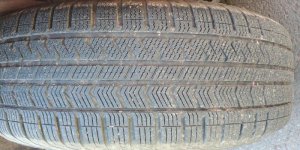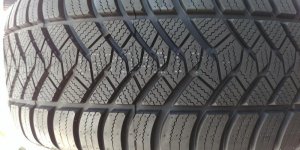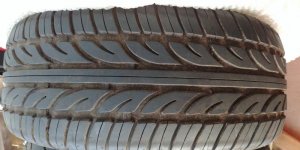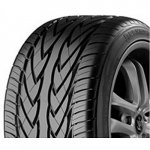Sticky as in hugging the pavement going around curves, which would be dry grip. The stickiness is usually a softer rubber, but I am looking forward to testing the Vredestein tire out for not only how sticky it is in the curves, but also the water displacement during and after rain.
Ah, well you may be disappointed, the Vredestein tyre is an 'All weather' tyre and as such is a compromise tyre primarily designed for countries of moderate climate where it's possible to have satisfactory results because the extremes of the weather are not great. It is a tyre capable of functioning as a snow tyre but also functioning as a summer weather tyre. Because these two extremes are so different, the compromises necessary in the design and function of the tyre limit its effectiveness at both extremes. It is simply not possible to have the best of both worlds and that is why summer tyres and winter tyres still exist - they're both better at their job than the compromise 'All weather' tyre design.
I run these tyres on my vehicles because, living in Scotland, we don't normally experience the extremes of temperature so an 'All weather' tyre is acceptable but I have to say that for the majority of UK drivers this is not the case and they run summer tyres all year around to have the benefits in handling and grip that the summer tyre provides.
So, to answer your question, no, an all weather tyre could not be considered a 'sticky' tyre for dry road use. Though it can be a very satisfactory tyre, nevertheless.
With regard to wet conditions, one has to separate wet grip and aquaplaning resistance, these two requirements are entirely different and require different characteristics of the tyre. It's a complex area and beyond a simple discussion here but a few basic principles can be mentioned.
For wet road grip the tyre needs to be capable of some water displacement and also capable of mopping up the remaining water so that the tyre rubber is in good contact with the asphalt surface; secondly, the rubber compound needs to be capable of griping a damp surface. Generlly, 'All weather' tyres are quite good at this so are a fair choice for the driver/rider who often encounters these conditions.
However, aquaplaning resistance requires that the tyre is so capable of displacing water that it resists the tendency to roll up the wedge of water formed under its leading face when rolling. To achieve this it must have wide grooves, the grooves must be arranged so as not to impede the water flow and, if possible the tread blocks are to act as water pumps as they are loaded and pressed against the road surface. Since at the onset of aquaplaning the tyre is leaving the road surface and riding up on top of the water, it stands to reason that the rubber compound is less important.
As a wee note, if a tyre tread has lots of large spaces it will have less rubber on the road surface, also it will be more difficult to arrange that its tread blocks support each other. These limitations can compromise performance and tyre life.
Plainly the whole picture is much more complex than this short note here but it is an outline and one can use the information as a guide when assessing the suitability of a particular tyre for one's own requirements.
I'll post 3 pictures of tyre treads, you can have a look and see which you consider to have certain characteristics.




